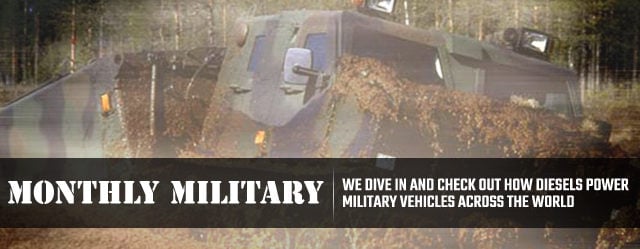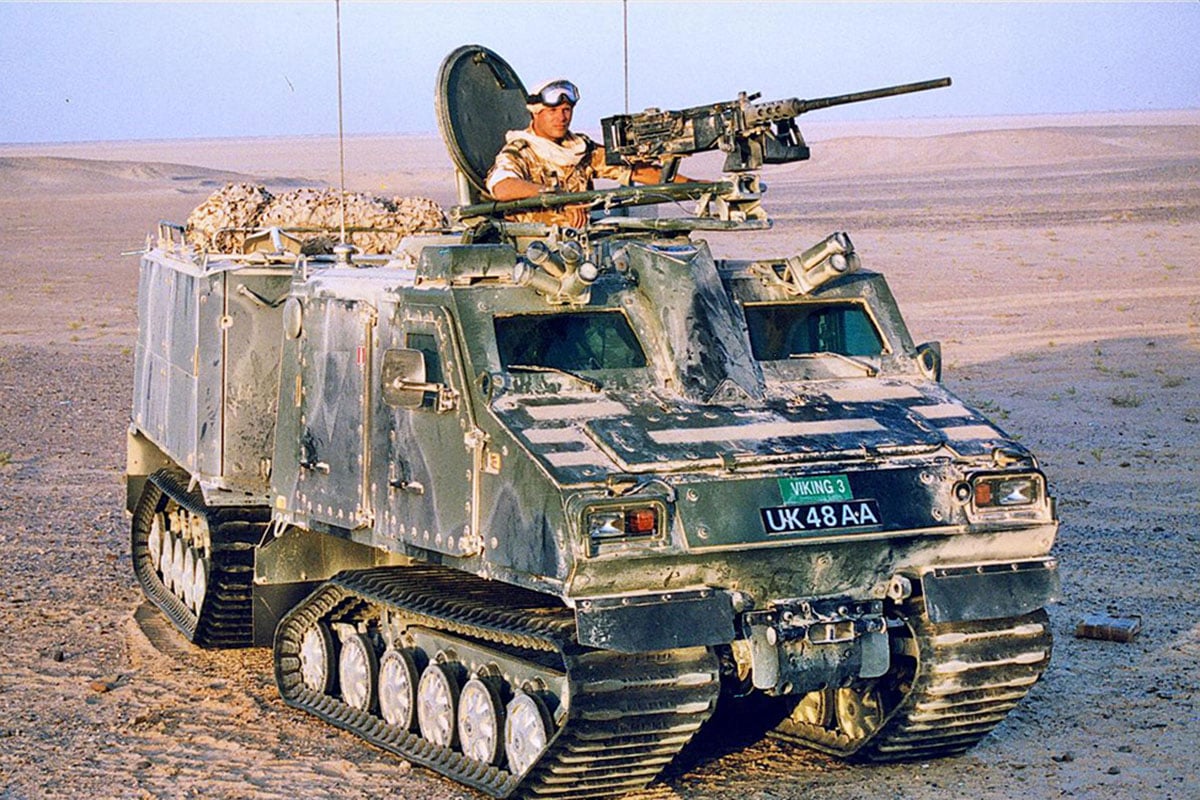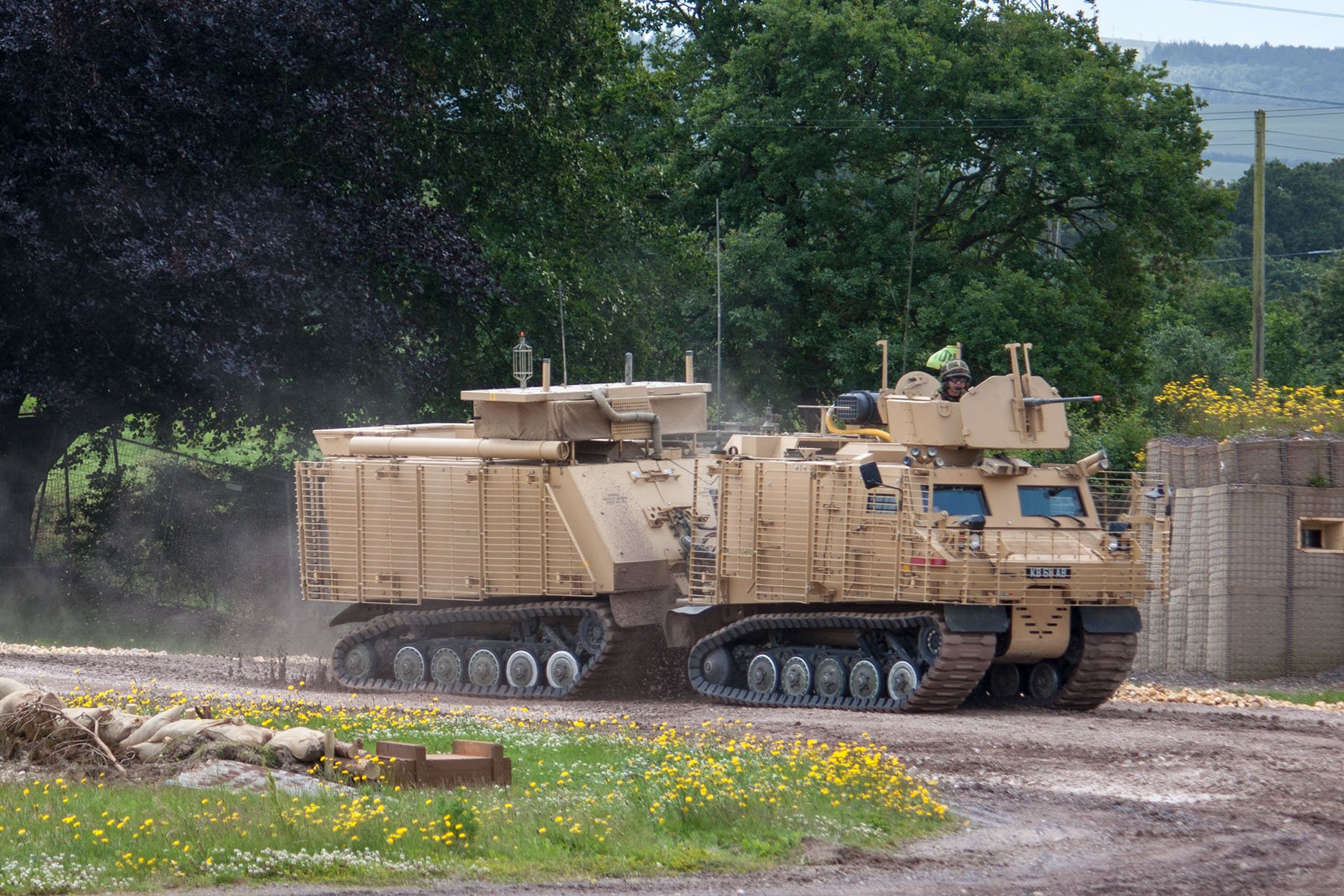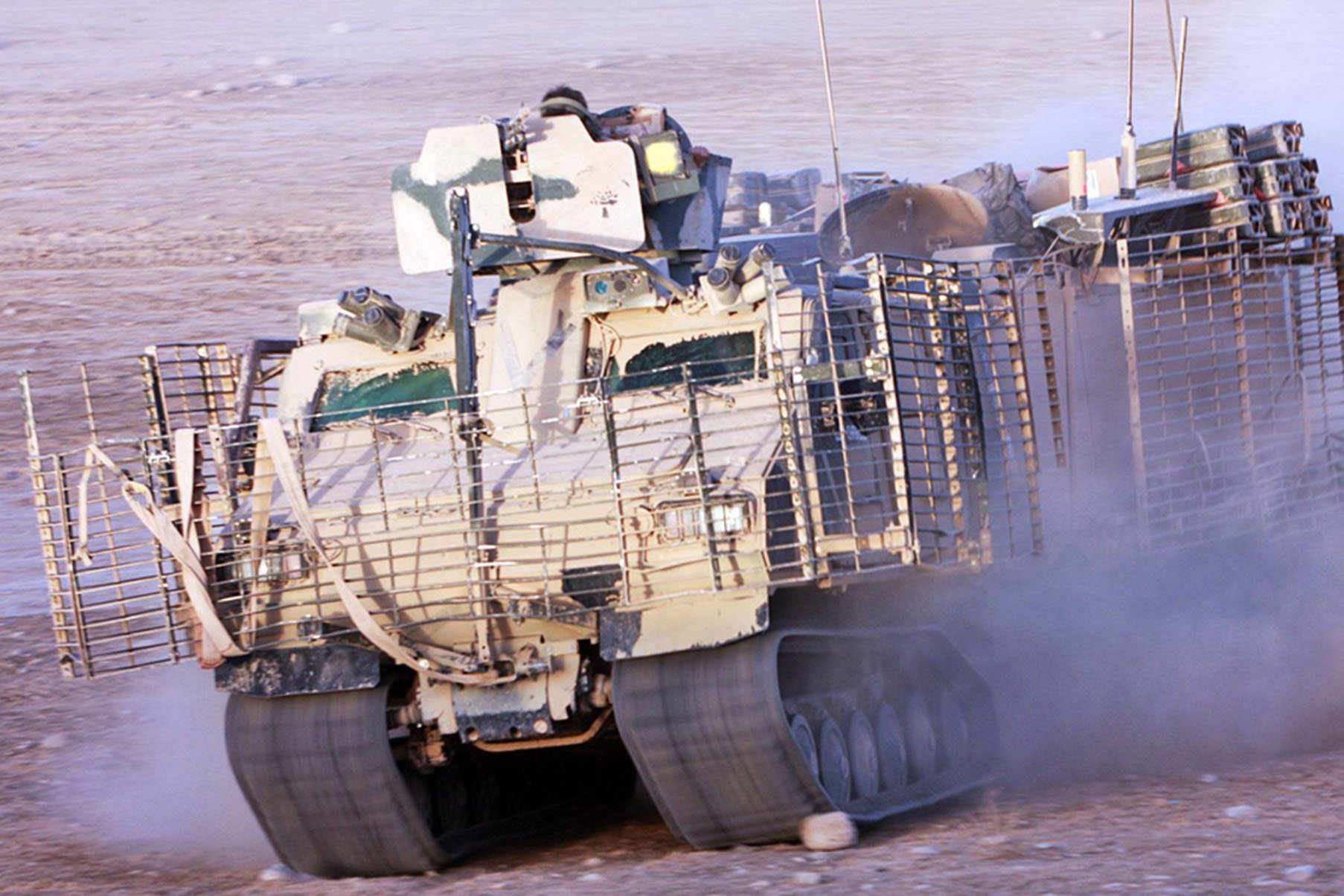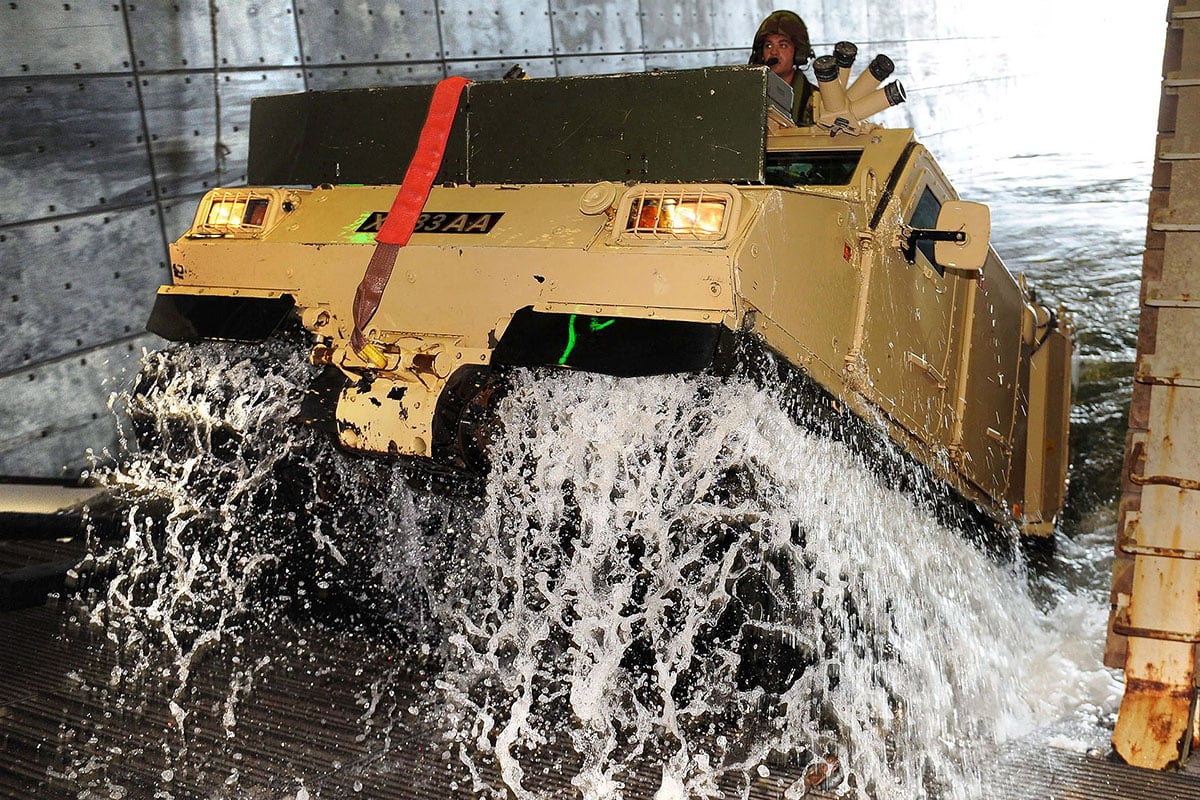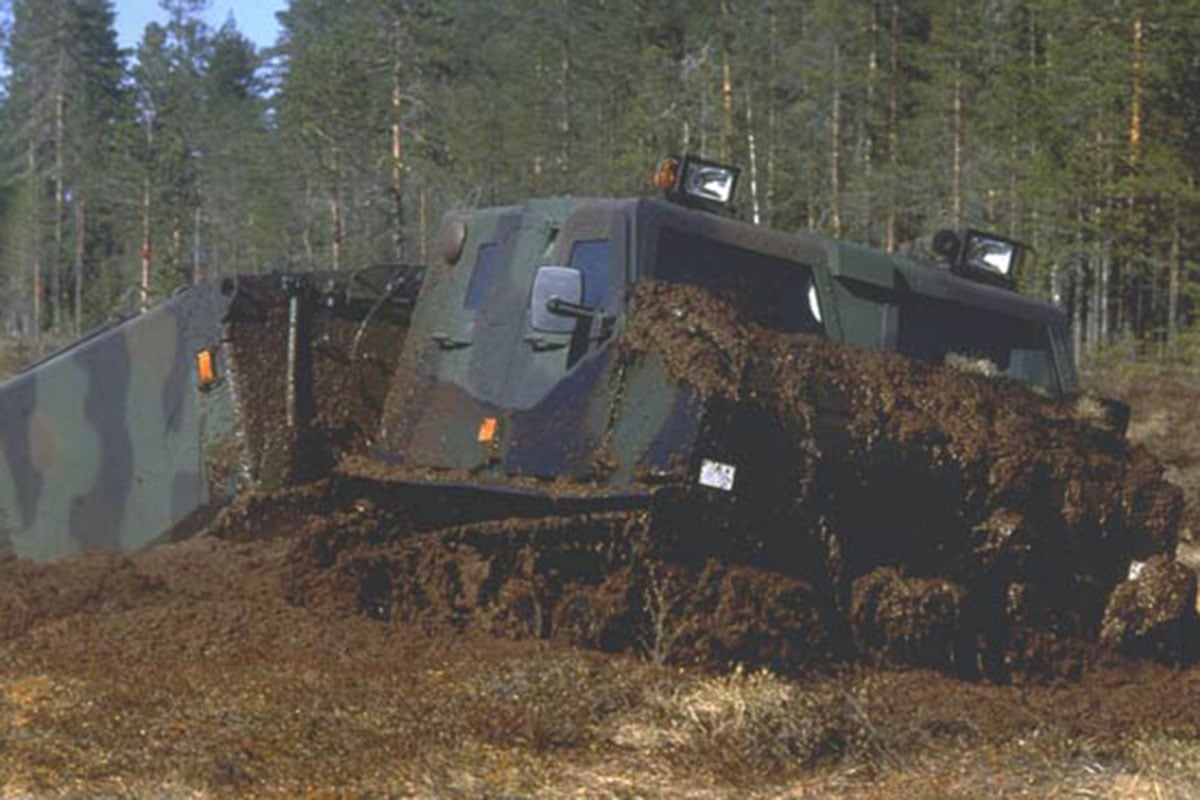In this month’s Monthly Military, we’re looking at a tracked twin-cab, all-terrain armored vehicle. It’s known by the British military as the Viking.
Produced by BAE Systems’ Swedish subsidiary Hägglunds, this amphibious carrier serves in a number of different roles. It’s found in the UK, French, Swedish, and Dutch armed forces. This is due in large part to its modular design, which allows for various configurations that can accommodate different types of cargo, armor, and weapon loadouts.
Development and Specifications
The BvS 10, or Bandvagn S 10 – Bandvagn means “tracked vehicle” in Swedish – is derived from the Bv 206, which features a similar tracked twin-cab design concept. The Viking is significantly larger, however. It weighs in at approximately ten tons depending on configuration, sporting a length of 25 feet, a height of 7.2 feet, and a width of 7.6 feet.
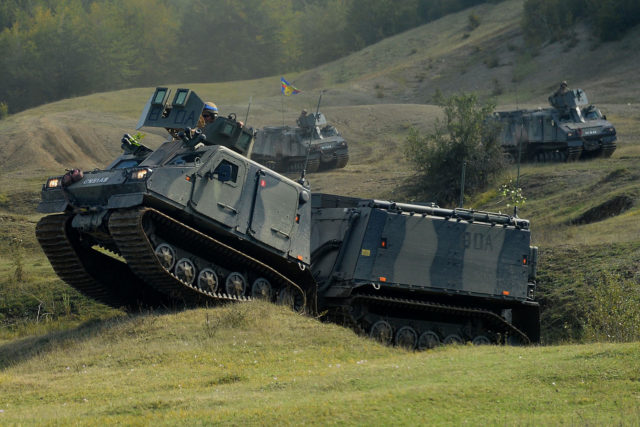 [2]
[2]More than 11,000 examples of the Bv 206 and Bv 206S are currently in service among 40 different countries around the world. Therefore, the BvS 10 Viking has benefited from both its lineage and the extensive real-world trials of its predecessors. In contrast to those vehicles, the Viking is both larger and fully amphibious, making it a significantly more versatile vehicle overall. Motivation is provided by a Cummins 5.9-liter inline six-cylinder diesel motor making 275 horsepower and 620 pound-feet of torque. The Cummins is hooked to a six-speed Allison MD3560 automatic transmission. Image: UK Defence Forum
Originally designed for the British Royal Marines, the BvS 10 represents the culmination of Hägglunds Vehicle AB’s 25 years of development with the Bv 206 and the larger Bv 206S. Both of those vehicles also employed a similar articulated design, consisting of two tracked vehicle units linked by a steering mechanism.
The Viking takes the design a step further, however. It employs a more powerful turbocharged Cummins 5.9-liter motor making 275 horsepower and 620 pound-feet of torque. There is also a revised chassis with better ground clearance, a reworked steering system, and other improvements that make the vehicle faster – top speed is 40 miles per hour on land, 3 mph in the water – as well as more drivable both on pavement and rough terrain.
The main armament of the BvS 10 is a heavy machine gun on a ring mount. Launchers at the front can fire smoke or white phosphorous grenades. Mortars can be outfitted at the rear. The Viking's protection consists of standard armor designed to withstand 7.62mm ball rounds, as well as 152mm artillery shell fragments from a range of more than 30 feet. Additional armor can be installed on the vehicle, stopping 7.62mm armor-piercing rounds. Later MKII variants have additional hull shielding to protect against mines and IEDs. Images: Military Today
The Cummins is hooked to an Allison MD3560 automatic transmission that offers six forward gears and one reverse. The additional grunt also provides a greater load capacity versus its predecessors, with the front cab boasting a payload capacity of 1800 pounds while the rear is rated at 4,400-6,700 pounds. The Viking can also tow a trailer with a maximum weight of 3.3 tons. At best, the Viking can go up to 185 miles.
 [6]
[6]Equipped with air conditioning for both front and rear cabs, the Viking accommodates 12 individuals (two crew members and ten passengers) in its troop transport configuration. It can operate in temperatures ranging from -51 to 115 degrees Fahrenheit. Communications between the two cabs is accomplished via a two-way voice intercom unit. Image: Army Recognition
As a transport, the BvS 10 seats a crew of three passengers and a driver in the front cab, while the rear cab can be configured to accommodate up to an additional eight passengers. Capable of operating in temperatures ranging from -51 to 115 degrees Fahrenheit, the Viking can be used in varied terrain without the need for retrofitting. This equates to rapid deployment capability in jungle, desert, and Arctic conditions.
The BvS 10’s main armament is a heavy machine gun (either an M2 Browning or M240). Frontal grenade launchers and rear mortars serve as secondary armaments. In terms of protection, the mine-resistant Viking is protected at all sides by armor designed to withstand 7.62mm ball rounds, as well as 152mm artillery shell fragments from a range of more than 30 feet. Additional armor can be outfitted to the vehicle, capable of stopping 7.62mm armor-piercing rounds.
 [7]
[7]Though not exactly a featherweight at roughly ten tons, an unloaded BvS 10 is light enough to be airlifted by Chinook in any of its available variants. If the Viking’s two sections are separated – a process which takes approximately 20 minutes – smaller helicopters like the Merlin can transport the BvS 10 in sections. Image: Military Today
Utilizing 620mm-wide molded rubber tracks, the Viking’s maximum ground pressure is roughly equivalent to the Bv 206. This is despite the fact that the Viking weighs about four tons more. It can ford through up to five feet of water without any preparation. Full amphibious capability is said to be possible with less than two minutes of preparation.
The Viking is can be shuttled to an operations area by either the C-130 Hercules or C-17 Globemaster. An unladen BvS 10 can be airlifted by an RAF Chinook helicopter. If split into two sections, it can be moved by a Merlin helicopter. How would you like to have one of these air dropped on your next adventure? Besides the cool factor this vehicle is extremely capable.
Production, Variants, and Proliferation
The first prototype Viking vehicles were delivered to the British Army in June of 2001. They underwent an extensive 24-month evaluation process in the United Kingdom. Other places included Sweden, Oman, and Norway, the latter of which included testing within the Arctic Circle.
The first production examples of the Viking would be delivered to the Royal Marines in 2003. After accumulating enough vehicles for initial operating capability, the BvS 10 would see its first operational deployment in October 2006. 33 units were sent into southern Afghanistan.
The Viking is capable of fording through up to five feet of water with no preparation. Outfitting the vehicle for amphibious duty is said to take less than two minutes, and the vehicle can travel at up to 5 kilometers per hour in water. With its relatively high land speed, modular design, and capability of handling a wide variance of climates and terrain, it's no surprise that the BvS 10 Viking continues to today, nearly 15 years after the initial batch of units was delivered to the British Ministry of Defence. Images: Wiki Commons, Army Technology
Over the years, the British Ministry of Defence would place orders for additional Viking units. 74 units are in operation with the Netherlands Marine Corps. The French Armed Forces placed an initial order for 53 BvS 10 Vikings in December of 2009 (which later expanded to 129 units). The Swedish Armed Forces has also acquired more than 150 BvS 10 units since 2012.
Along with the troop-carrying configuration of the Viking, several other variants have also been produced. The Command Variant is designed to accommodate a crew of two and up to eight passengers (rather than the standard configuration’s layout of 2 + 10) with the rear cab serving as an enhanced digital communications platform. The Repair and Recovery variant is designed to transport four specialist mechanic crewmen. It carries a mobile repair shop, as well as an HIAB crane on the rear cab. The Ambulance variant is equipped with specialized medical equipment. All three are designed to be capable of being airlifted by a CH-47 Chinook helicopter.
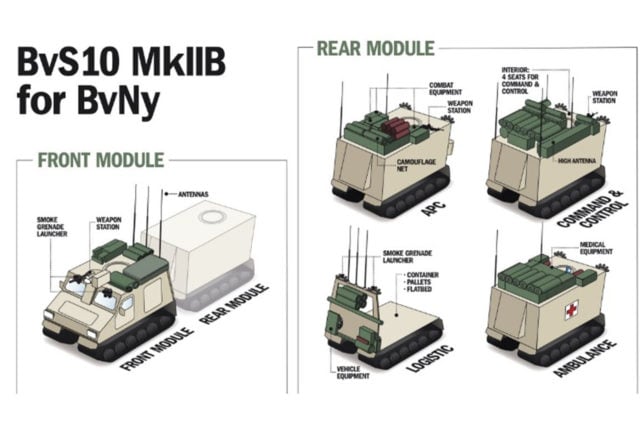 [10]
[10]The modular design of the Viking’s rear cab allows for a number of variants to be offered. These include a Repair and Recovery variant that is designed to transport specialist mechanics and remove disabled vehicles from the operations area if needed. The MKII version of the Viking started production in 2009 with upgraded mechanicals, bolstered protection against IEDs, and other improvements. Image: Army-UK
In late 2009, production of an upgraded version of the BvS 10 began. Dubbed the MKII, this new-and-improved Viking sports chassis, armor, and powertrain upgrades, though its load carrying capacity remains unchanged. Most importantly, it features significantly improved mine protection, as earlier units had proven vulnerable to IED attacks.
The BvS 10 Viking remains in production today, with Austrian Army earmarking 32 units for delivery between 2017 and 2018.
